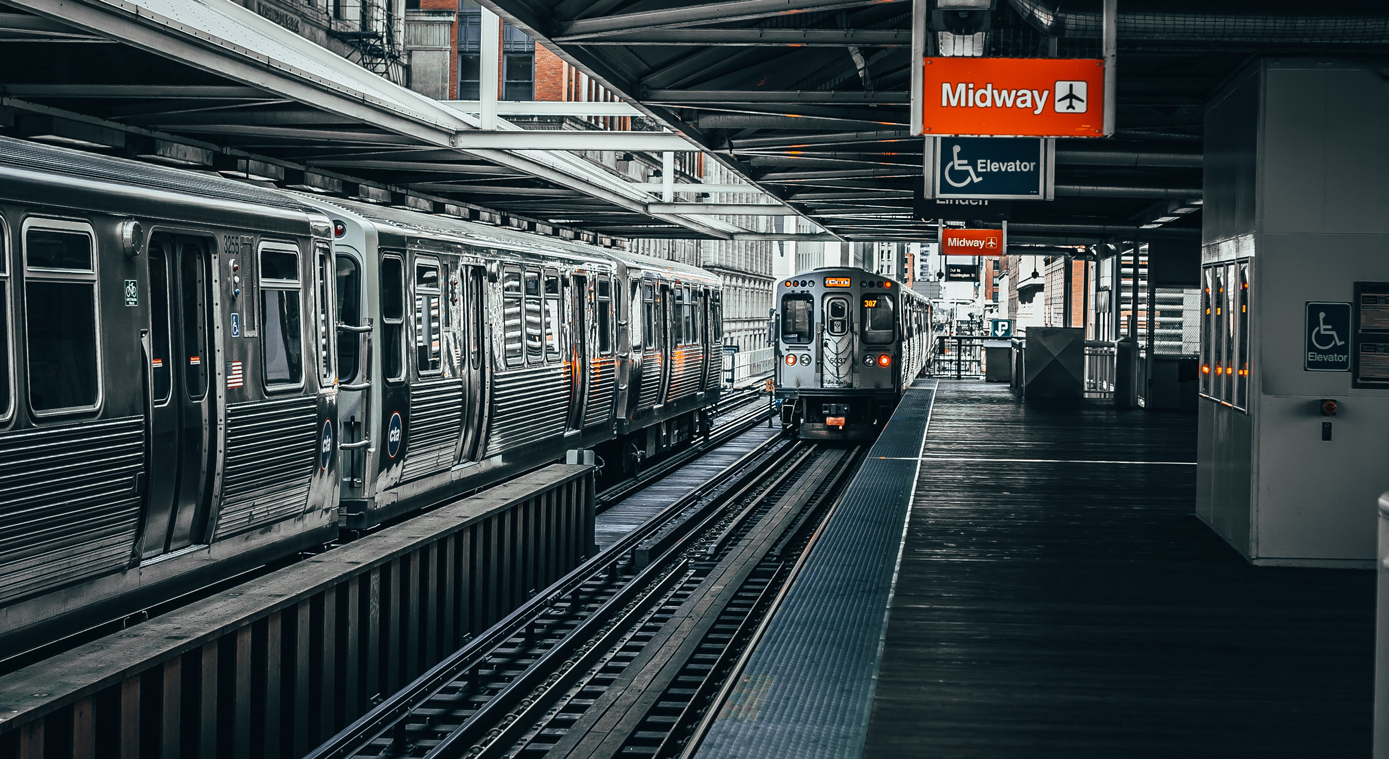
Coronavirus Is Ravaging Chicago’s Public Transit—But For How Long?
The rumble of trains on Chicago’s “L” hasn’t slowed in recent weeks. But the shuffling of passengers in and out of stations has all but dissipated.
Therein lies the foundation of a pernicious, enduring consequence of the coronavirus in Chicago: in order to support the flow of essential workers through the city and to prevent dangerous overcrowding (though, not eliminate it entirely), the CTA is maintaining its typical weekday service. But with the broad majority of the city sheltering in place, revenue has been bitterly decimated.
The lasting effects of the coronavirus pandemic on Chicago’s economy are hard to determine right now, and consequently, the impact on the regional transit system is equally unclear. What is evident is that the consequences of this crisis on the region’s public bus and rail networks will reverberate for years to come.
The root of the problem precedes the crisis by decades, and is predicated upon a precarious set of local, regional, and state tax structures that are prone to creating budgetary challenges whose impact is felt long after the events that caused them in the first place are over. The CTA’s decade-long recovery from the 2008 financial crisis is just a recent example of this problem.
Jeremy Glover, an expert at the Metropolitan Planning Council in the region’s myriad transit networks, joined us to discuss the impact of the pandemic on the local transit systems, how their funding will be impacted long after the crisis ends, and why public transit networks are the backbone of the regional economy.
Chicago Ideas (CI): What has been coronavirus’s biggest impact on transit in the Chicago area?
Jeremy Glover (JG): The most immediate impact the coronavirus has had on transit is on ridership. The overall system has seen an 82 percent decrease in ridership. As of April 13, Metra has lost about 97 percent of its daily riders; CTA rail is down 86 percent, CTA bus is down 75 percent and Pace bus is down 67 percent. These impacts are not uniform across the region, though. There are reports of crowded conditions on some CTA bus lines on the South Side, where many people are both transit commuters and essential workers.
CI: Some analysts are predicting that the real transit challenges will be in the future—due to the ways the CTA/RTA receives funding. Why is this the case, and what could the impact look like?
JG: Both CTA and Metra cover approximately half of their operating expenses with system-generated revenues. This is mostly passenger fares, but also includes things like advertising, concessions, and state reimbursements for fare subsidy programs. The other half of their operating expenses are covered by public funding sources.
By far, the largest part of the public funding comes from the RTA sales tax, which assesses a small additional sales tax on many goods bought in the RTA service area. The amount of sales tax revenue the transit agencies receive is totally dependent on the overall economy. If consumer spending is strong, so are the sales tax revenues. In this case, consumer spending has plummeted, so the public funding will take a large hit.
The CARES Act will provide emergency Federal operating support for Chicago-area transit in the amount of $1.438 billion, which can be used to make up for lost revenue and increased costs during the crisis.
CI: Why will this potentially be a problem beyond just the shelter-in-place period?
Due to labor agreements and the desire to meet the mobility needs of essential workers, the CTA has not yet scaled back service. Their operating expenses have not significantly changed, but their revenues have plummeted. This will leave a large hole in their budgets that will take a long time to recover from, even after the shelter-in-place order is lifted. CARES emergency funding will help but it’s unclear how ridership will be impacted in the long term.
CI: The CTA took a long time to recover after the 2007-2008 financial crisis. Why was that, and what can we learn from that period to understand the challenges ahead?
The financial crisis in 2008 impacted all of CTA’s revenue sources. Unemployment was high, so ridership was down. Consumer spending was low, so the sales tax revenue was also low. Another important source of public funding is the real estate transfer tax, which is a tax assessed any time real estate is bought or sold. With a cratered housing market, that tax was also significantly impacted. At the same time, the state was facing significant economic hardship and was unable to make consistent reimbursement payments for the mandated fare subsidy programs that CTA offers.
The fate of our regional transit agencies will be determined by the speed of the economic recovery as well as how quickly the medical risks of COVID-19 can be addressed proactively, like a vaccine. Recovery from the 2008 crisis was long and slow. It remains to be seen how many businesses and jobs will survive the current shutdown and how long the economic impacts will linger.
Why is public transit so important for the regional economy more broadly?
One in four households in Chicago do not have access to a personal vehicle. About one in eight households in the greater Chicago region have no car. Transit is vitally important for those households to have access to jobs, goods, and services. As this crisis has laid bare, their fate is our fate.
We also have an extremely congested region. If you eliminated all Metra service, it would take 26 additional lanes of interstate to move the same number of people in and out of the Loop every workday. Transit makes the incredible density of economic activity we have in Chicago possible. If transit services are permanently cut as a result of the pandemic, it will have the largest impact on marginalized groups who are already disconnected from many opportunities. That will have a ripple effect throughout the entire economy.
CI: How will things be different on public transit moving forward? What major changes do you foresee?
Hopefully, this pandemic will show the public that transit is a vital service that not only moves the economy, but is critical to the health and well-being of society at large. In the best-case scenario, the pandemic will result in an increased public support for high-quality, reliable, and fast transit. Some of the changes being made to protect the health and safety of operators, like rear-door boarding, also have positive impacts on service reliability. Hopefully, those changes will be made permanent.




